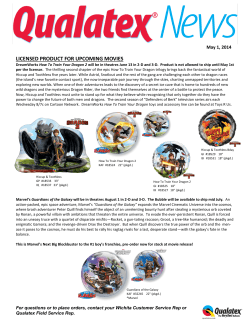
Hawksbill Sea Turtle The Kid’s Times: Volume I, Issue 1
NOAA’s National Marine Fisheries Service, Office of Protected Resources The Kid’s Times: Volume I, Issue 1 Michele T. Sharer Hawksbill Sea Turtle The mouth of a this turtle species looks like the beak of a hawk, thus the name hawksbill was given to it. Sea turtles are graceful saltwater reptiles, well adapted to life in their marine world. With streamlined bodies and flipper-like limbs, they are graceful swimmers able to navigate across the oceans. When they are active, sea turtles must swim to the ocean surface to breathe every few minutes. When they are resting, they can remain underwater for much longer periods of time. How did the hawksbill get its name? The hawksbill sea turtle gets its name from its distinct beak -like mouth. A hawksbill’s head tapers to a point and their lower jaw is V-shaped, adding to the hawk-like resemblance. What do they look like? Hawksbill turtles are beautiful, mediumsized sea turtles. Adults are usually 30-36 inches long and weigh 100-200 pounds. Their carapace is covered in thick overlapping scales that are called scutes. The scutes are usually amber colored and richly patterned, with radiating streaks of lighter brown and black. Hatchlings are only 1-2 inches long and mostly brown in color. The overlapping scutes are evident even in hatchlings. Where do they live? Hawksbill turtles primarily live in the tropics and subtropics of the Atlantic, Indian, and Pacific oceans. They are most often found in coral reef habitats. It is thought that hawksbill turtles live the first years of their lives in the open ocean until they return to more coastal waters when they are older. How long do they live? No one knows exactly how long hawksbill sea turtles live, but like other sea turtles they are likely long-lived. What do they eat? A hawksbill’s diet consists mainly of sponges that live on coral reefs. Their sharp, narrow beaks are used to feed on prey found in reef crevices. When and where do females lay their eggs? Female hawksbills return to their natal beaches every 2-3 years to nest during the months of June through November in the United States. Females will lay an average of 4-5 clutches during the season at about 14-day intervals. Female hawksbills lay their eggs on tropical, and sub-tropical sandy beaches. On some beaches they prefer to dig their nest chambers in dense beachside vegetation or beneath giant sea grape trees. In the United States, a few turtles nest in Hawaii and Florida. The most important nesting beaches are found in Puerto Rico and the U.S. Virgin Islands. Adult females first clear away the dry sand with their front flippers and then dig a hole in the sand with their rear flippers and lay a clutch of eggs. After covering the nest, the turtle returns to the sea and the eggs develop over the next 50-60 days. Hawksbills lay large clutches, with an average of 160 eggs. Hatchlings emerge at night and make their way to the sea, if undisturbed by artificial beachfront lighting. Who are their predators? Hatchlings are much more susceptible to predators than adults. Ghost crabs, raccoons, skunks, opossums, mongooses, and dogs feed on the eggs. Various nocturnal mammals and crabs feed on the hatchlings when they first emerge from their nest on the beach, and fish and seabirds are a threat to hatchlings in the water. Only sharks are large enough to prey upon adult sea turtles. Their long flippers are especially vulnerable. Man is another predator of the hawksbill turtles. How many are there? As with other sea turtles one of the best ways to monitor the status of populations is to survey nesting beaches over many years. However, because hawksbills usually nest in small numbers, and often on remote beaches, it is very difficult to estimate the population size. Volume I, Issue 1 Why are they in trouble? Hawksbill turtles are critically endangered because of their beautiful shell. They have been hunted for hundreds of years in huge numbers for the “tortoise shell” that is used in many types of jewelry and trinkets. It is known that harvesting for their shell has resulted in many fewer hawksbill turtles than there were historically. This has been the major cause of the decline in hawksbill populations throughout the world. Hawksbill turtles are also hunted, but to a much lesser degree, for leather, oil, perfume, and for ingredients used in cosmetics. They are rarely hunted for their meat, since their diet of sponges can make their flesh poisonous to eat. Johan Chevalier Hawksbill sea turtle ‘Tortoise shell” actually comes from the shell of a hawksbill sea turtle. For many years, products were made from the beautiful shells. Since hawksbills nest on beautiful tropical beaches, their nesting habitat is often developed for tourism and recreation. Construction of houses on or near beaches, beach cleaning, beachfront lighting, and removal of important beach vegetation can reduce the number of successful nests. The destruction or disturbance of coral reef habitats can also destroy their food source (sponges) as well as important resting habitat. Like other sea turtles, hawksbills also become entangled and drown in commercial and recreational fishing gear and marine debris. Hawksbill sea turtle Volume I, Issue 1 Michael Coyne One surprising threat to sea turtles is the balloons that people let go. These balloons often float over the ocean before popping, and sea turtles can choke on the pieces of the balloon that fall into the water. Floating balloons look like jellyfish to sea turtles. turtles for a class to raise awareness, adopt a turtle, or follow a sea turtle telemetry project. You can help just by remembering not to release balloons or throw trash into the ocean. You can also help spread the word to your family and friends that sea turtles are an important part of the environment and should be protected. Glossary: Carapace: The top shell of a turtle Clutch: A group of eggs The shell of the hawksbill sea turtle helps it stay camouflaged among the coral reefs and near the ocean floor as it forages for food and rests. What is being done to help them? Hawksbill sea turtles were listed as endangered under the United States Endangered Species Act (ESA) in 1970 to protect the animals in the waters of the U.S. The Convention on International Trade of Endangered Species (CITES) forbids the trade of any turtle products on the international market, including the “tortoise shell” from hawksbill turtles. Many state laws and the ESA are also powerful legislative tools for protecting hawksbills. As researchers learn more about the life history of hawksbill sea turtles, the U.S. and other nations will be better able to protect their nesting and foraging habitats. What can you do to help sea turtles? It is possible for anyone to help support sea turtle conservation. You can help participate in beach cleanups or attend a public sea turtle walk. You can do a presentation on Crevice: A narrow crack Forage: To look for food Hatchling: A turtle just emerged from the egg Natal beach: The beach where the turtle is born Scutes: The overlapping plates on a carapace Subtropics: The area of the world bordering the Tropics. Tropics: The area of the world around the equator between the Tropic of Cancer and the Tropic of Capricorn. NOAA’s National Marine Fisheries Service Office of Protected Resources www.nmfs.noaa.gov/pr/ Molly Harrison 2005
© Copyright 2025

















